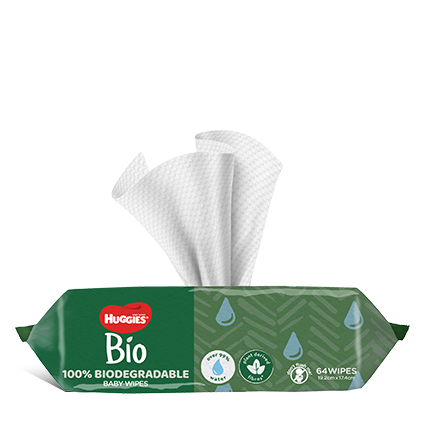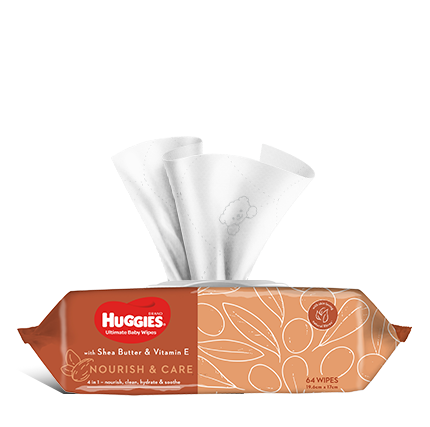Coping with food allergies
Information from the US suggests that there is a high likelihood of a child outgrowing an allergy to milk, egg, soy, fish and wheat (around 75%). For allergies to peanuts, tree nuts and shellfish however the news isn t as good, with some 20% of children becoming tolerant later in life (American Academy of Allergy, Asthma and Immunology, 2013). Ongoing monitoring via a suitably qualified health care professional is ideal so you can track how your little one is going.
Is there anything that can help?
Of course, there are some positive things that can be done to lower the risk of allergies. Given that around 60% of allergies appear in the first year, much of it is diet-related. Some guidelines based on information from the Australian Society for Clinical Immunology and Allergy (ASCIA) that may help include:
- For mums-to-be: There is no clear evidence that avoiding food allergens during pregnancy will prevent allergies in your little one. Instead, a balanced healthy diet high in variety is better for you both.
- New mums: Breastfeeding for the first six months provides excellent protection against allergies and is the most ideal condition by which to introduce solids so that the immune system is supported at this time. Early introduction of solids (before 16 weeks) appears to increase the risk of allergy, so start babies on complimentary foods between four and six months of age. Don t avoid foods unless you know there is an issue; delaying foods doesn t appear to be advantageous.
- Nursing mums: If baby has a history of allergy or has been diagnosed with an allergy, it may be useful for you to avoid that food while breastfeeding and replace it with another food (the jury is still out on this). Always ensure that your diet is varied, healthy and adequate to meet the demands of breastfeeding.
- Bottle-feeding mums: The use of hydrolysed formulas is generally recommended by doctors and specialists for infants with allergies (these are call extensively hydrolysed formula and are only available by prescription). However, there is some evidence that partially hydrolysed formula (denoted as HA) may be a preferable option if using formula in the first few months of a bub's life as this may be better tolerated and reduce the incidence of reactions. Keep in mind using soy or goats milk-based formulas doesn t appear to prevent allergy. Around half of all children who have a cows milk allergy are also allergic to soy.
Source: ASCIA, Infant Feeding Advice, 2010
Can other foods and nutrients help?
Being such a topical issue, researchers are hot on the trail of nutrients and compounds that offer allergy sufferers some ease. Current research points to a number of beneficial nutrients which exert their effect by improving the immune system. For example, it appears that the levels of vitamin C in a mother's breastmilk are associated with allergy risk in infants. Vitamin C and other antioxidants such as vitamin E and beta-carotene in breastmilk may play an anti-inflammatory role in infant allergy. While much research is done on single nutrients, our focus is diet. Some other hopeful contenders include:
Fabulous fish and those omega-3 fatty acids
Fish rich in healthy oils (i.e. omega-3 fatty acids) may create a protective effect against allergy as well as potentially reducing the symptoms. To date, studies indicate that children who eat fresh, oily fish regularly have a higher protection against asthma.
Which fish R best?
Rich sources of omegas include:
- Atlantic salmon
- Gemfish
- Blue-eye trevalla
- Blue mackerel
- Sardines
Even tinned fish such as mackerel, pink and red salmon and sardines (although not tuna) can be good options, all providing reasonable amounts of omega-3s. Just one last word on the larger fish such as swordfish: they tend to have higher amounts of mercury, so it may be a good idea to avoid those.
You can read more about just which fish are rich sources of omega-3s via the site below:
http://omega-3centre.com/omega-3s/getting-enough-omega-3s/sources/
Healthy bacteria to the rescue probiotics (acidophilus and bifidus)
Probiotics are healthy bacteria found in some foods such as yoghurt with live cultures (more specifically made from live cultures rather than added after) and also in dietary supplements. Probiotic bacteria such as acidophilus aid our intestinal bacteria to keep our insides safe from bad bacteria and other immune attacks. Probiotics may also be able to reduce the symptoms of lactose intolerance and the occurrence of allergy. The area of probiotics and their effect is vast as there are many types of probiotics. Just which ones do what is still not entirely clear. Breastmilk, of course, is a rich source and many formulas now have added probiotics.
Yoghurt tip! Be aware that many types of yoghurts are simply thickened milk with sugar, fruit and good bacteria added. Real yoghurt is made from fermented milk which is started off with a culture of acidophilus. Because it's fermented, bacteria partially digest some of the milk sugar (lactose) which enables many lactose-intolerant individuals to cope with these healthy yoghurts.
For more information, contact the Australasian Society of Clinical Immunology and Allergy ([email protected]). Also the RPAH allergy unit is an extensive resource. You can access a copy of the RPAH Elimination Diet Handbook with food and shopping guide here
Where to go for help
Always seek professional medical advice.
For more information and guidance refer to The Australian Society of Clinical Immunology and Allergy (ASCIA) website contains useful information on food allergy written by Australian specialists (www.allergy.org.au).
The Royal Prince Alfred Hospital has an excellent allergy unit, check out their web site for more information at
www.sswahs.nsw.gov.au.
This information has been provided by Leanne Cooper Director of Cadence Health and Food Coaching Courses, Leanne is a registered nutritionist and mother of two very active boys.
This fact sheet may be reproduced in whole or in part for education and non-profit purposes with acknowledgement of the source. It may not be reproduced for commercial use or sale.
The information presented is not intended to replace medical advice.
This information has been provided by Leanne Cooper Director of Cadence Health and Food Coaching Courses, Leanne is a registered nutritionist and mother of two very active boys.
This fact sheet may be reproduced in whole or in part for education and non-profit purposes with acknowledgement of the source. It may not be reproduced for commercial use or sale.
The information presented is not intended to replace medical advice.
Updated July 2014.
Last Published* May, 2024
*Please note that the published date may not be the same as the date that the content was created and that information above may have changed since.




















